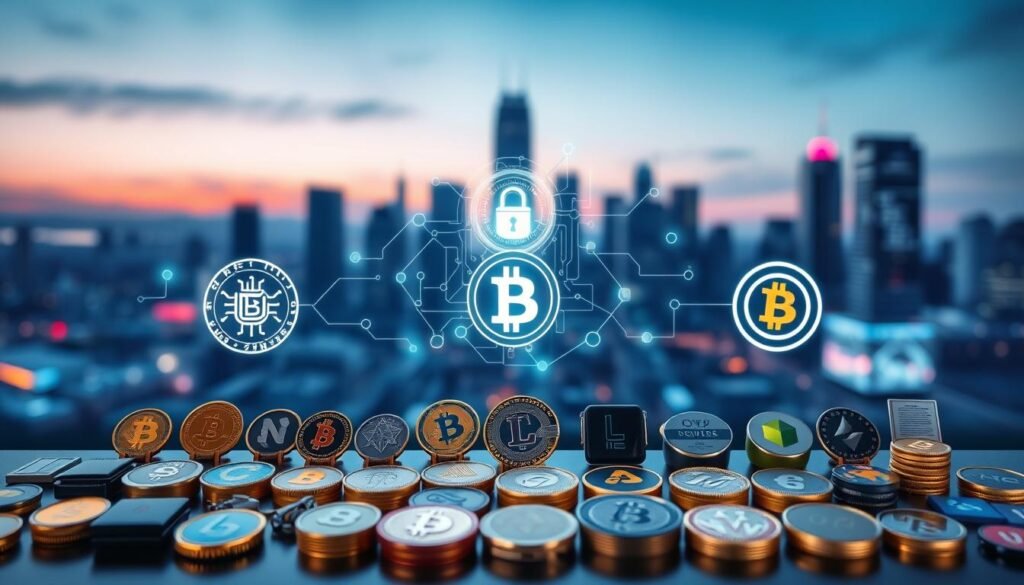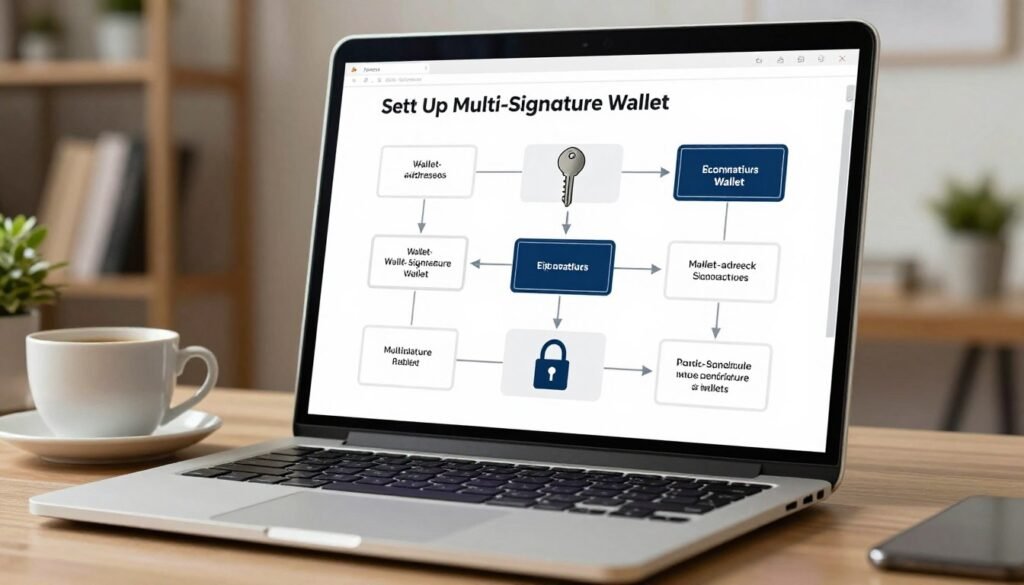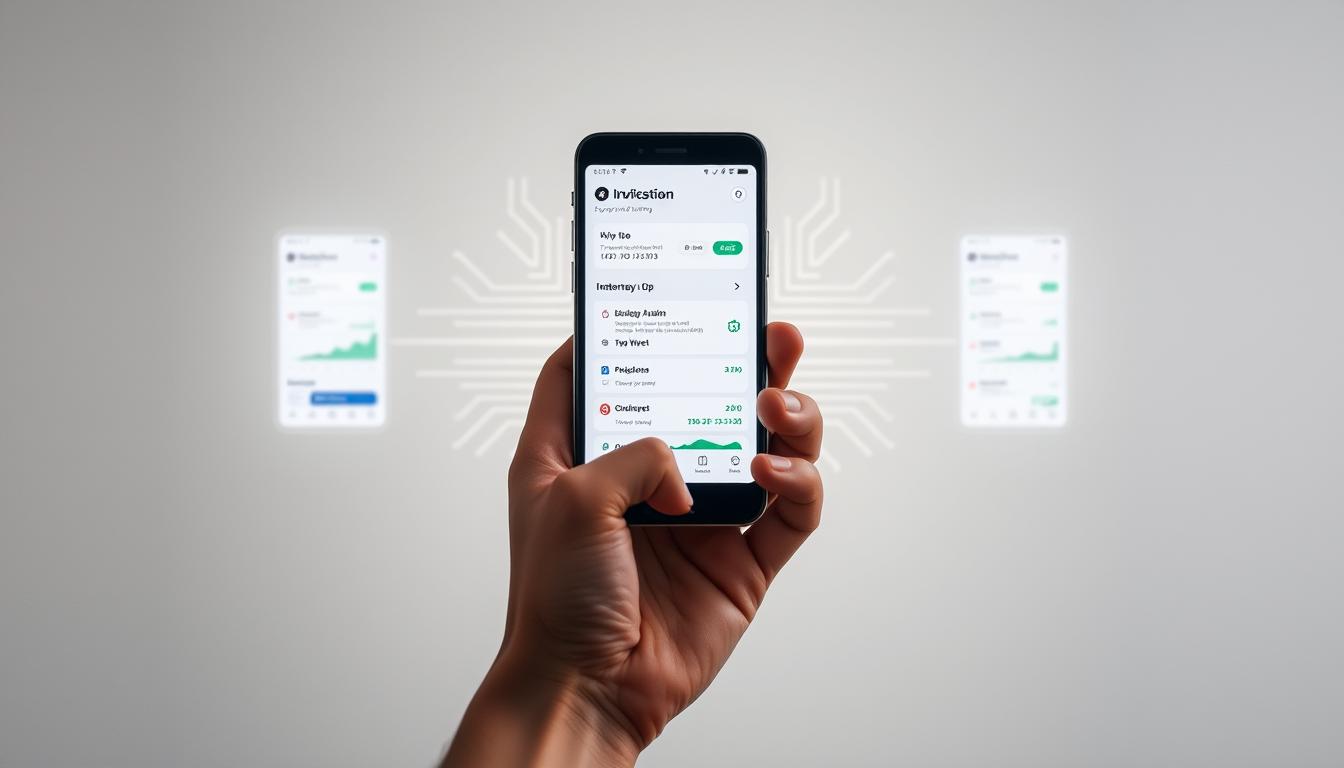Now Reading: Learn How to buy Bitcoin with credit card safely and securely
- 01
Learn How to buy Bitcoin with credit card safely and securely
Learn How to buy Bitcoin with credit card safely and securely

This concise guide explains why so many people in the United States use card rails as an on‑ramp to crypto. About 82% of American adults have a credit card, and over 93% carry a credit debit card or debit option. That wide access makes purchases fast and familiar.
Card buys often finish within minutes on trusted platforms. But speed has trade-offs. Platform fees can be higher, and some issuers treat crypto payment as a cash advance with extra charges and high APRs.
We contrast custodial platforms that hold funds and keys with direct-to-wallet services like Bitcoin Depot that send coins straight to your wallet. The section previews practical steps: choose reputable platforms, enable protections, verify your wallet, and check fee policies before any purchase.
Key Takeaways
- Card rails are common because they are convenient and fast for buying bitcoin.
- Expect higher fees and possible cash-advance treatment from some issuers.
- Custodial platforms store keys; direct services deliver to your wallet for more control.
- Set up account protections and confirm wallet addresses before a purchase.
- Treat card-based buying as a short-term convenience, not long-term credit financing.
Safety first: foundations for buying Bitcoin with a credit or debit card in the United States
First, verify what your bank and card network permit for cryptocurrency payments in the U.S. Many major issuers — including Bank of America, Chase, Capital One, Wells Fargo, Citibank, Discover, TD Bank, and Barclays — may block or classify card transactions for crypto as a cash advance. That coding can trigger immediate interest and high APRs.
Issuer rules change often. Visa and Mastercard networks generally allow crypto on a technical level, but partner banks set policy. American Express sometimes permits purchases but often carries higher fees and limited acceptance.
Decide whether a custodial exchange will hold keys or if a non‑custodial service sends coins straight to your wallet. Custodial platforms can impose holds or withdrawal limits; non‑custodial flows give you control but require careful address checks.
- Confirm platform and processor PCI‑DSS compliance and AES‑256 encryption.
- Use private Wi‑Fi when entering card numbers or wallet addresses; avoid public hotspots.
- Monitor both bank and platform dashboards for suspicious transactions and set alerts.
- If debit is allowed, it can reduce cash‑advance risk versus a credit route; compare daily limits and platform fees.
For comparison of on‑ramps and card-friendly services, consider a reputable purchase flow like Changelly and review debit options at a curated guide on crypto debit cards.
How to buy Bitcoin with credit card safely and securely
Start the process by confirming your card supports crypto purchases. Call your issuer or check its online terms so you know if transactions will be coded as a cash advance. That one step avoids surprise interest and fees.
Next, pick a reputable platform such as Coinbase, Kraken, Binance, Crypto.com, or a payment on‑ramp that partners with MoonPay. Create an account, finish KYC, and enable two‑factor authentication before adding payment methods.
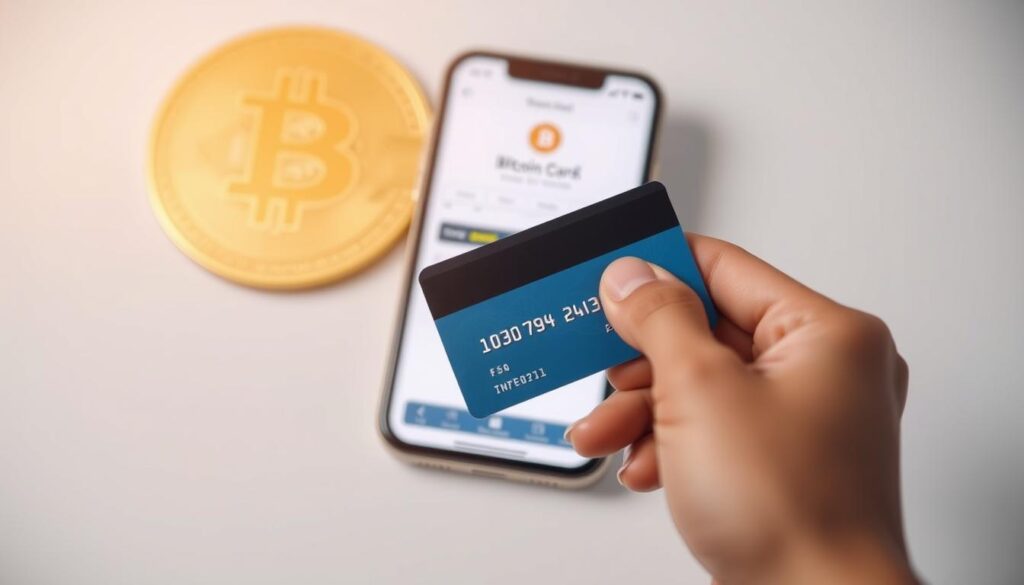
Set up your account
- Create an account, complete identity verification, and turn on 2FA for stronger security.
- Link your credit card carefully: match the cardholder name and complete any micro‑charge checks.
- Add a backup debit or bank account for fallback if the main card is declined.
Make the purchase
Select BTC, enter the amount, and review all fees and limits—platform fees, spread, and any issuer cash‑advance treatment affect your net purchase. If sending to a personal wallet, double‑check the address and consider a small test purchase first.
Keep a record of the transaction ID and check confirmations on a block explorer. For a simple purchase gateway, consider the linked purchase gateway at buying bitcoin as part of your comparison.
Choosing where to buy: exchanges, payment platforms, and direct-to-wallet services
Pick a buying route that matches your needs: trading, instant on‑ramps, or direct delivery to your wallet.
Centralized exchanges like Coinbase, Kraken, Binance, Crypto.com, and eToro offer familiar interfaces, deep liquidity, and clear fee schedules. These exchanges accept cards in many regions and make it easy to compare costs before you buy bitcoin.
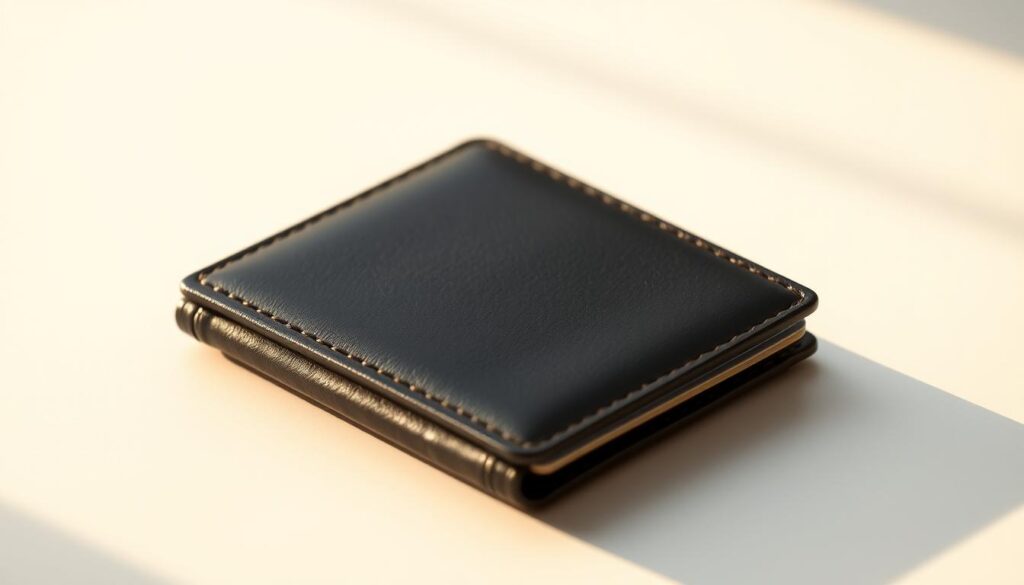
Payment platforms and custodial trade-offs
Payment platforms speed up transactions by integrating card rails directly in‑app. They are convenient, but many remain custodial and may hold funds or require extra identity checks before withdrawals.
Direct-to-wallet and third-party on-ramps
Direct services such as Bitcoin Depot send BTC straight to your digital wallet, which supports self‑custody from purchase. Third‑party processors like MoonPay power card flows across sites, while Bitunix supports Visa, Mastercard, Apple Pay, and Google Pay and lists 700+ cryptocurrencies with AES‑256 and PCI‑DSS protections.
Wallet choices for your crypto portfolio
An exchange wallet is handy for trading. A non‑custodial wallet gives full control of keys and better long‑term security. Match your wallet choice to how active you will be in trading and managing your crypto portfolio.
Costs, risks, and smarter alternatives when using cards to buy Bitcoin
Understand total costs before you enter payment details. Combine platform fees with issuer cash charges and any APR that starts immediately on many credit transactions. Typical issuer cash advances add about 3–5% and APRs can range roughly 17.99%–29.99%.
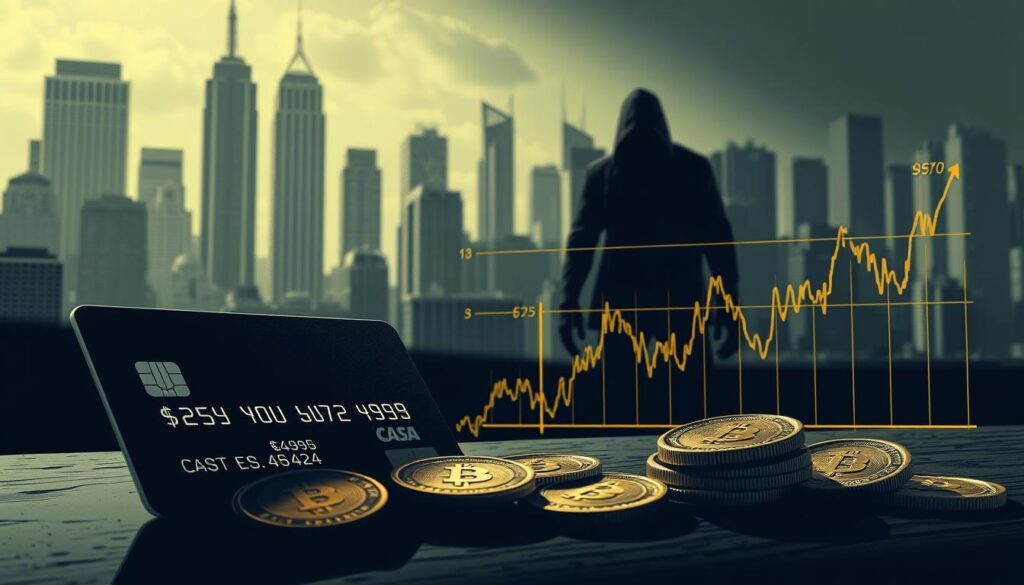
Assess risk, not just speed. High volatility can magnify credit risk: if value falls after a purchase, interest accrues while the asset drops. Chargebacks are tricky because blockchain transfers are irreversible, so disputes can take much longer to resolve.
- Know issuer limits and restrictions. Banks such as Wells Fargo, Chase, Capital One, and others have historically blocked or limited some transactions; verify your bank’s current policy.
- Build a total‑cost picture. Add platform fees, issuer cash fees, and possible APR. Rewards often do not apply and limits may be lower for these purchases.
- When to avoid card purchases. If fees stack, limits bite, or you plan a large purchase, prefer lower‑cost funding methods.
Alternatives include debit cards where allowed, ACH or wire bank transfers (lower fees, slower settlement), peer‑to‑peer marketplaces with escrow (more risk), and Bitcoin ATMs (convenient but often 5–11% fees). Match the payment option to your goals: quick small buys for convenience, bank transfers for larger, cost‑sensitive allocations.
Your next steps to a secure, fast Bitcoin purchase today
Start by picking the route that fits your goals: if speed and self‑custody matter, choose a direct‑to‑wallet service and confirm your wallet backup. Do a quick readiness check—use private Wi‑Fi, update your device, enable 2FA, and have your bank account or card details on hand so checkout can finish within minutes.
Compare platforms on total cost and support for payment methods like Apple Pay and Google Pay. Test a small buy bitcoin transaction first to verify address accuracy, platform process, and customer support. Consider services such as Bitcoin Depot for direct delivery or Bitunix for broad asset access and 24/7 help when you need it.
Set rules for future purchases: use a card for small, urgent buys and debit or bank transfers for larger amounts. Move long‑term holdings into a non‑custodial digital wallet and keep a routine of checking transactions, rotating passwords, and storing seed phrases offline to protect your crypto portfolio.
FAQ
Are card purchases of cryptocurrency legal in the United States?
Yes. Buying cryptocurrency using a debit or credit card is legal in the U.S., but it depends on bank policies and state regulations. Some issuers classify crypto purchases as cash advances or block them entirely, so check your cardholder agreement with banks like Chase, Wells Fargo, or Capital One before attempting a transaction.
Which payment cards typically work for purchasing crypto?
Visa and Mastercard are widely accepted on major exchanges and payment platforms. American Express acceptance is more limited. Even when a network supports card transactions, individual issuers can still restrict crypto purchases, so verify acceptance and potential cash-advance treatment with your bank.
What’s the difference between custodial and non-custodial purchases?
Custodial purchases leave your crypto held by an exchange or payment provider that controls your private keys. Non-custodial purchases send coins directly to a wallet you control, giving you sole custody of private keys. For long-term security and self-sovereignty, transfer funds into a non-custodial wallet after buying.
What security measures should I expect from platforms that accept cards?
Reputable platforms use PCI-DSS compliance for card data, AES-256 or equivalent encryption for stored assets, multi-factor authentication (MFA), and monitoring for suspicious transactions. Use private Wi‑Fi or a trusted mobile network and enable MFA before making any purchase.
How do I set up an account to purchase crypto with my card?
Choose a reputable exchange or payment service, complete identity verification (KYC), and enable security features like MFA and withdrawal whitelisting. Link your debit or credit card following platform instructions and confirm daily or per-transaction limits before making a purchase.
What should I check when making the card transaction?
Verify the recipient wallet address, review platform fees and spread, confirm whether the issuer treats the charge as a cash advance (which may incur APR and fees), and check limits. Consider small test purchases first to confirm everything works as expected.
Which exchanges accept card payments?
Major centralized exchanges that commonly accept cards include Coinbase, Kraken, Binance, Crypto.com, and eToro. Acceptance varies by region and card issuer, so confirm availability in your account settings or support pages.
Are there direct-to-wallet services that accept cards?
Yes. Some on-ramps and services deliver crypto directly to your wallet instead of holding custody. Examples include certain integrations from MoonPay and Bitunix for Apple Pay/Google Pay, plus online services from providers like Bitcoin Depot that allow direct transfers to a personal wallet.
What role do third-party processors play in card purchases?
Third-party processors like MoonPay and other payment gateways handle the card transaction and compliance, then route crypto to the exchange or wallet. They simplify payment methods such as Apple Pay and Google Pay but may add fees and have custody or KYC requirements.
Should I store my new crypto on an exchange wallet?
For frequent trading, short-term use, or convenience, keeping assets on an exchange wallet is acceptable. For long-term holdings, transfer funds to a non-custodial wallet—hardware wallets or trusted mobile wallets—so you control private keys and reduce custodial risk.
What fees should I anticipate when using a card?
Expect platform fees, spreads between buy and market price, possible third-party processor fees, and issuer fees like cash advance charges and APR. Card purchases often cost more than bank transfers. Review the fee breakdown before confirming a transaction.
What risks are unique to using cards for crypto purchases?
Key risks include high fees, volatile price movement between purchase and confirmation, possible chargebacks and issuer disputes, increased credit utilization affecting scores, and fraud. Always monitor transactions and use reputable platforms with strong security controls.
Which banks or issuers commonly restrict card-based crypto purchases?
Policies change, but some issuers may restrict or flag crypto transactions. Customers should check with banks like Chase, Wells Fargo, Capital One, and card networks for current policies. If blocked, alternatives include debit cards, ACH/bank transfers, or peer-to-peer markets.
When should I avoid using a card for a purchase?
Avoid card purchases for very large amounts due to high fees, when your issuer treats the transaction as a cash advance, or if you face low card limits. In those cases, consider bank transfers, ACH, or wire transfers which typically offer lower fees and higher limits.
What are smarter alternatives to card-based purchases?
Safer and cheaper options include debit card purchases (often lower fees), ACH or bank transfers, peer-to-peer (P2P) marketplaces, and Bitcoin ATMs. Each method has trade-offs in speed, cost, and convenience—choose based on urgency, fees, and security needs.
How quickly can I receive crypto after a card purchase?
Card transactions are usually fast; many platforms credit crypto within minutes. However, KYC checks, issuer holds, and anti-fraud reviews can delay delivery, so expect possible waits for first-time buyers or large transactions.
What final steps should I take after purchasing?
Immediately move long-term holdings into a non-custodial wallet if you control the private keys. Record transaction receipts, enable ongoing account security, monitor statements for unauthorized charges, and track tax implications based on IRS guidance for cryptocurrency.


